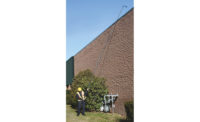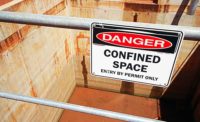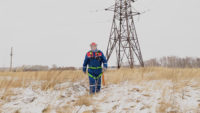You’ve probably heard confined space horror stories a million times. The person inside a confined space becomes unresponsive. The “hole watch” responsible for monitoring the work goes into the confined space to check on their partner and is overcome by the same deadly gas. According to OSHA, these would-be rescuers make up 60 percent of confined space fatalities. It’s a tragic story of trying to help a co-worker based on gut reaction rather than proper safety protocols.
Properly training all workers before they work in or around confined spaces is a must, but in reality, not every job is performed under ideal conditions or with enough information about gas hazards.
Advancements in gas detection equipment, including area monitors, take these tragic real-world scenarios to heart and incorporate better communication technology to ensure everyone working around confined spaces will not only hear and see gas alarms, but also know where and why instruments are alarming. These new technologies aim to reduce would-be rescuer fatalities and accidents due to false evacuations. They also facilitate a faster emergency response from trained peers in the field, rather than relying on help from a central controller many miles away.
While it’s common for workers to perform atmospheric testing in confined spaces with handheld portable instruments, area monitors with peer-to-peer wireless connectivity can improve efficiency and safety of confined space operations, particularly those calling for extended, continuous monitoring.
What is peer-to-peer wireless connectivity?
More and more companies are turning to gas detectors linked by peer-to-peer mesh networks because they can connect workers and share gas readings without costly infrastructure or the hassles of IT setup.
Peer-to-peer communication networks wirelessly connect gas monitors in a certain range through a mesh network to share real-time alarms and gas readings. Certain models of area monitors and personal gas monitors can use this type of connectivity to improve worker safety by sharing real-time data with nearby confined space attendants. With this data, the attendant watching the hole in our example above would have known what caused his partner to become unresponsive without being exposed firsthand.
Unlike other market solutions, peer-to-peer mesh networks don’t require cellular or satellite, so the communication still works in confined spaces without traditional connectivity. Instead, these networks use devices as nodes to transmit data, with the data hopping from one node (or gas monitor) to another until reaching its destination. Think of it like students in a classroom: a student on one side of the room can pass a note to the other side of the room by handing it to a neighbor, who then passes the note to their own neighbor, all the way across the room.
Monitoring multiple confined spaces
According to OSHA standard 1910.146(d)(6), “Attendants may be assigned to monitor more than one permit space provided the duties described in paragraph (i) of this section can be effectively performed for each permit space that is monitored. Likewise, attendants may be stationed at any location outside the permit space to be monitored as long as the duties described in paragraph (i) of this section can be effectively performed for each permit space that is monitored.”
While OSHA’s rule says that watching multiple confined spaces at one time is acceptable, choosing the right gas detection tool is imperative.
Area monitors that offer a large display, clear alarms and long run times can exceed regulatory requirements, while adding wireless connectivity can increase the effectiveness and efficiency of safety programs. For example, if area monitors are placed inside the confined space, or are placed outside confined spaces with tubing to draw samples from inside the space, they can relay the gas readings to other connected instruments. That allows the attendant the flexibility to monitor what’s happening from any other connected instrument. If one instrument goes into alarm, all connected units will go into alarm. The attendant will know exactly where and what the problem is because it’s visible on the instrument display.
Having this information lets the attendant know whether the entrant should be evacuated, whether it’s safe to enter the confined space, and helps them determine what other safety precautions to take. The area monitor loudly and clearly communicates the hazard so there is little need for interpretation or ambiguity. In addition to the gas reading and high alarm icon, the attendant will know the difference between high alarms, low alarms, and maintenance reminders thanks to varying tones and different flashing colors that correspond to each alarm level. This can help to bridge the gap for inexperienced or untrained workers. These communication mechanisms, combined with peer-to-peer wireless, help reduce false evacuations and better prepare workers for gas hazards around confined spaces.
The live monitoring layer
Knowing what’s happening at any given moment across a site increases reaction times and helps responders know what they are facing and where they need to go. Using a cloud-based live monitoring platform connected to wireless area monitors is the easiest way to view real-time area monitor readings from a remote control room or any internet-connected device, providing instant access to live data.
Real-time area monitoring allows for a more holistic view of environmental conditions with advanced warnings and the ability to react quickly. In addition, the constant availability of data provides staff and employers with deeper insight into potential hazards – empowering management to make decisions that will improve job safety in the long run.



